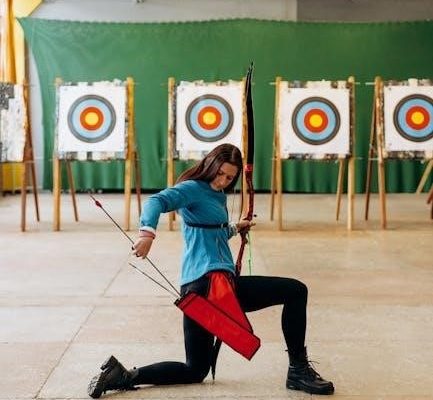Maxine Hong Kingston’s The Woman Warrior is a groundbreaking memoir blending autobiography, mythology, and cultural exploration, offering a profound reflection on identity and heritage.
Overview of Maxine Hong Kingston’s Work
Maxine Hong Kingston, born in 1940 to Chinese immigrant parents in Stockton, California, is a celebrated writer and academic. Her seminal work, The Woman Warrior, blends memoir, mythology, and cultural critique, exploring themes of identity, heritage, and gender. Kingston’s writing often navigates the duality of her Chinese heritage and American upbringing, creating a unique narrative voice; As a Senior Lecturer for Creative Writing at the University of California, Berkeley, she has influenced Asian American literature significantly. Her work challenges traditional genres, merging personal and collective histories. The Woman Warrior remains her most iconic piece, earning critical acclaim and establishing her as a pioneer in Asian American storytelling.
Significance of the Title “The Woman Warrior”
The title “The Woman Warrior” encapsulates themes of strength, resilience, and cultural identity central to Maxine Hong Kingston’s work. It references mythical female figures like Fa Mu Lan, symbolizing bravery and resilience. The title reflects Kingston’s journey of self-discovery, blending Chinese mythology with her American upbringing. It challenges traditional gender roles, emphasizing women’s strength and agency. The “warrior” aspect represents her fight to reconcile dual identities and assert her voice. The title honors women preserving cultural heritage through storytelling, carving Kingston’s space in Asian American literature. It signifies empowerment through resilience and storytelling, making it a powerful symbol of identity and cultural duality.

Cultural Identity in “The Woman Warrior”
Maxine Hong Kingston explores the intricate dance between Chinese heritage and American upbringing, weaving personal and collective journeys to navigate cultural duality and self-discovery;
Chinese Heritage and American Upbringing
Maxine Hong Kingston’s The Woman Warrior delves into the tension between her Chinese heritage and American upbringing, creating a vivid portrayal of cultural duality. Born to Chinese immigrant parents in Stockton, California, Kingston navigates the expectations of traditional Chinese culture while growing up in a Western society. Her experiences reflect the struggle to reconcile these dual identities, as she grapples with the silence and invisibility often imposed on Asian American women. Through storytelling and personal reflection, Kingston bridges the gap between her ancestors’ myths and her own American reality, offering a powerful exploration of belonging and self-discovery.
The Role of Ghosts and Mythology
In The Woman Warrior, Maxine Hong Kingston employs ghosts and mythology to bridge cultural divides and explore identity. Drawing from Chinese folklore, she weaves stories of mythical figures and ancestral spirits to convey the haunting presence of cultural heritage. These elements serve as metaphors for the lingering influence of tradition and the silenced voices of women. Kingston’s use of mythology allows her to navigate the complexities of her dual identity, blending personal narrative with collective memory. Ghosts, in this context, symbolize both the past and the unseen forces shaping her life. Through this fusion, she transforms personal and cultural histories into a powerful exploration of belonging and self-discovery.
Blending of Cultural Traditions
In The Woman Warrior, Maxine Hong Kingston masterfully blends Chinese and American cultural traditions, creating a unique narrative voice. Drawing from her Chinese heritage, she incorporates folklore, myths, and family stories while situating them within her American upbringing. This fusion allows her to explore the tensions and harmonies between these two worlds. Kingston’s work challenges cultural binaries, presenting a fluid identity that navigates both traditions. By merging myth with personal history, she crafts a story that is both deeply personal and universally resonant. This blending of traditions not only reflects her own experiences but also offers a broader commentary on the immigrant experience and the search for cultural belonging.
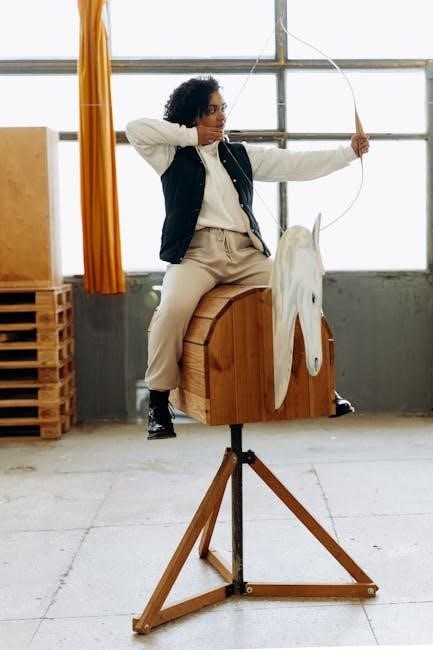
Autobiographical Elements
The Woman Warrior is a memoir that blends personal narratives with cultural myths, exploring Kingston’s Chinese-American identity through vivid storytelling and reflections on family and heritage.
Memoirs of a Girlhood Among Ghosts
The Woman Warrior is deeply personal, weaving Maxine Hong Kingston’s childhood memories with mythical tales. She recounts growing up in a world where Chinese traditions and American culture intersect, creating a sense of displacement. Kingston’s “ghosts” symbolize the lingering presence of her Chinese heritage, which she both embraces and struggles with. Her mother’s stories of ancestral traditions and myths shape her identity but also highlight the challenges of cultural adaptation. This memoir captures the tension between silence and storytelling, as Kingston navigates her dual identity, ultimately finding voice through her writing. The text is a poignant exploration of belonging, memory, and the immigrant experience.
Storytelling as a Means of Self-Discovery
Storytelling in The Woman Warrior serves as Maxine Hong Kingston’s tool for self-discovery, bridging the gap between her Chinese heritage and American upbringing. Through vivid narratives, she navigates the complexities of her identity, blending personal memories with mythological tales. Kingston’s use of storytelling allows her to confront silenced histories, particularly those of women, and to reclaim her voice. Her unique narrative style, which mixes autobiography with folklore, creates a space for emotional and cultural exploration. This approach not only reflects her journey of self-discovery but also validates the power of voice in overcoming silence and cultural dislocation. Kingston’s storytelling becomes a transformative act, connecting past and present, and self and community.
The Impact of Cultural Dislocation
Maxine Hong Kingston’s The Woman Warrior vividly portrays the impact of cultural dislocation on her identity. Caught between her Chinese heritage and American upbringing, Kingston experiences alienation and confusion. The clash of cultural values creates a sense of displacement, affecting her sense of self and belonging. This dislocation is evident in her struggles to reconcile traditional Chinese expectations with the freedoms of American life. Kingston’s narrative reflects the emotional turmoil of navigating two worlds, highlighting the challenges of maintaining cultural identity in a foreign environment. This tension shapes her journey of self-discovery, as she seeks to find her place within conflicting cultural frameworks.
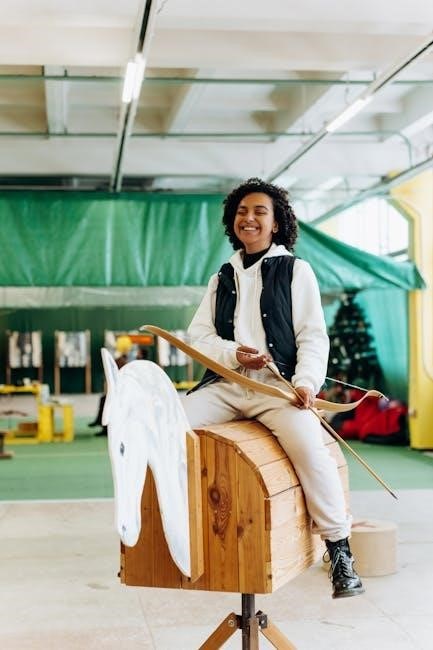
Themes and Motifs
The Woman Warrior explores themes of silence, identity, and cultural dislocation, weaving together personal narrative with myth, highlighting the struggle to reconcile conflicting cultural expectations.
Silence and the Power of Voice
Silence and the Power of Voice
In The Woman Warrior, silence is both a burden and a form of resistance. Kingston illustrates how silence is imposed on women, particularly through the tragic aunt’s story, whose death symbolizes the consequences of being voiceless. The protagonist’s journey is a quest to find her voice, breaking free from cultural and familial expectations. Kingston uses storytelling as a tool to reclaim silenced narratives, emphasizing the power of voice in asserting identity and challenging oppression. This theme resonates deeply, showing how silence can both marginalize and empower, depending on who wields it.
The Tragic Aunt’s Story and Its Symbolism
The tragic aunt’s story in The Woman Warrior is a haunting narrative of shame, silence, and societal judgment. Kingston’s aunt, who becomes pregnant out of wedlock, is abandoned by her family and ultimately takes her own life. Her story serves as a powerful symbol of the devastating consequences of cultural expectations and the suppression of female sexuality. The aunt’s death represents the destruction of a woman who defies traditional norms, embodying the silent suffering endured by many women in patriarchal societies. Kingston uses this story to critique the rigid moral codes that stifle individual freedom and to highlight the lasting impact of such tragedies on family and identity.
Mother-Daughter Relationships
In The Woman Warrior, Maxine Hong Kingston explores the complex and often fraught relationship between mothers and daughters, shaped by cultural expectations and generational gaps. Kingston portrays her mother as a symbol of both love and authority, whose silence and withholding of stories create a deep emotional divide. The tension arises from the clash between traditional Chinese values and the daughter’s Americanized identity. Kingston’s journey to understand her mother reflects her broader quest for self-discovery, as she seeks to bridge the cultural and emotional chasm between them. This relationship becomes a central theme, highlighting the struggles of communication and the enduring bond that persists despite misunderstandings. Kingston’s narrative ultimately reveals the transformative power of uncovering and embracing these complexities.
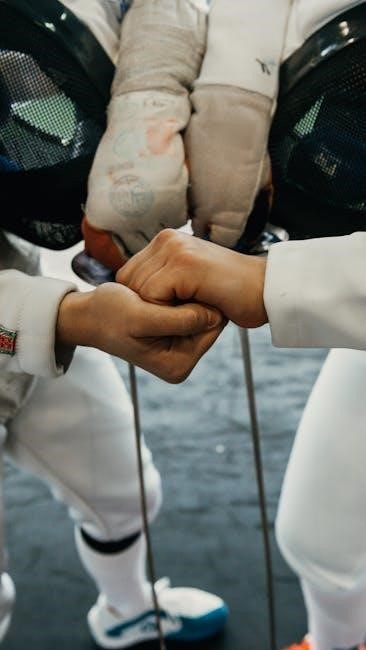
Comparative Analysis
The Woman Warrior is often compared to other autobiographical works, showcasing Kingston’s unique blend of mythology and personal narrative, setting it apart from traditional memoirs.
Similarities with Other Autobiographical Works
Maxine Hong Kingston’s The Woman Warrior shares similarities with other autobiographical works in its exploration of identity, cultural dislocation, and the blending of personal narrative with cultural mythology. Like Toni Morrison’s The Bluest Eye, Kingston’s work delves into the tensions of growing up between two cultures, using storytelling as a tool for self-discovery. The book also mirrors the genre-defying approach of authors like Primo Levi and Wole Soyinka, whose works combine personal experiences with broader cultural and historical contexts. Kingston’s use of myth and autobiography aligns with these authors, creating a unique yet familiar narrative structure that challenges traditional memoir conventions while resonating with readers on a deeply personal level.
Contrasts with Traditional Memoirs
Maxine Hong Kingston’s The Woman Warrior diverges from traditional memoirs by blending autobiography with mythology, folklore, and fantasy. Unlike conventional memoirs that focus on factual narratives, Kingston’s work integrates mythological tales and ghost stories, creating a unique genre that challenges the boundaries of autobiography. The book’s non-linear structure and fragmented storytelling also set it apart, as it weaves together personal experiences with cultural legends. This approach allows Kingston to explore themes of identity, silence, and cultural dislocation in a way that transcends traditional memoir formats, making it a pioneering work in Asian American literature and feminist storytelling. Its innovative style redefines how personal and cultural histories can be presented.
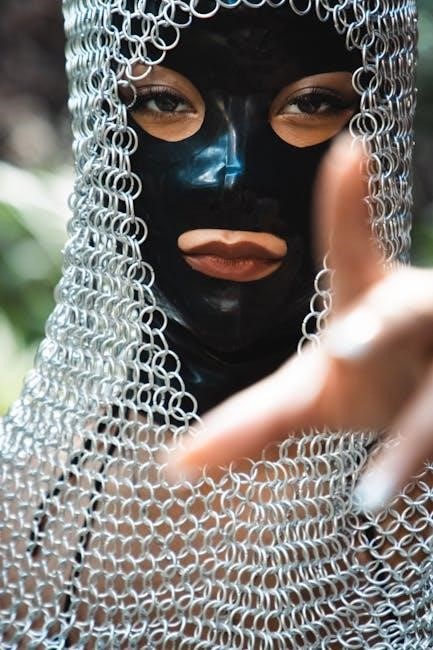
Legacy and Cultural Impact
The Woman Warrior is a landmark text in Asian American literature, influencing feminist and multicultural studies. Its innovative storytelling has reshaped autobiographical writing and cultural narratives globally.
Reception and Criticism of the Book
Maxine Hong Kingston’s The Woman Warrior received widespread acclaim for its innovative blend of memoir, mythology, and cultural critique, earning the National Book Critics Circle Award. Critics praised its lyrical prose and exploration of identity, while some debated its genre-defying format. The book has become a cornerstone of Asian American literature, celebrated for its unflinching portrayal of cultural dislocation and gender roles. However, it also faced criticism for its perceived departure from traditional memoir conventions and its handling of cultural representation. Despite these debates, the work remains a seminal text in feminist and multicultural studies, inspiring countless writers and scholars.
Influence on Asian American Literature
The Woman Warrior has profoundly shaped Asian American literature, offering a voice to silenced narratives and redefining the boundaries of cultural storytelling. Kingston’s work inspired a generation of writers to explore themes of identity, cultural hybridity, and personal history. By blending mythology with autobiography, she created a unique narrative style that has influenced authors like Amy Tan and Celeste Ng. The book’s success also paved the way for the publication of diverse Asian American voices, fostering a richer literary landscape. Its legacy continues to resonate, making it a foundational text in the study of multicultural and feminist literature.
